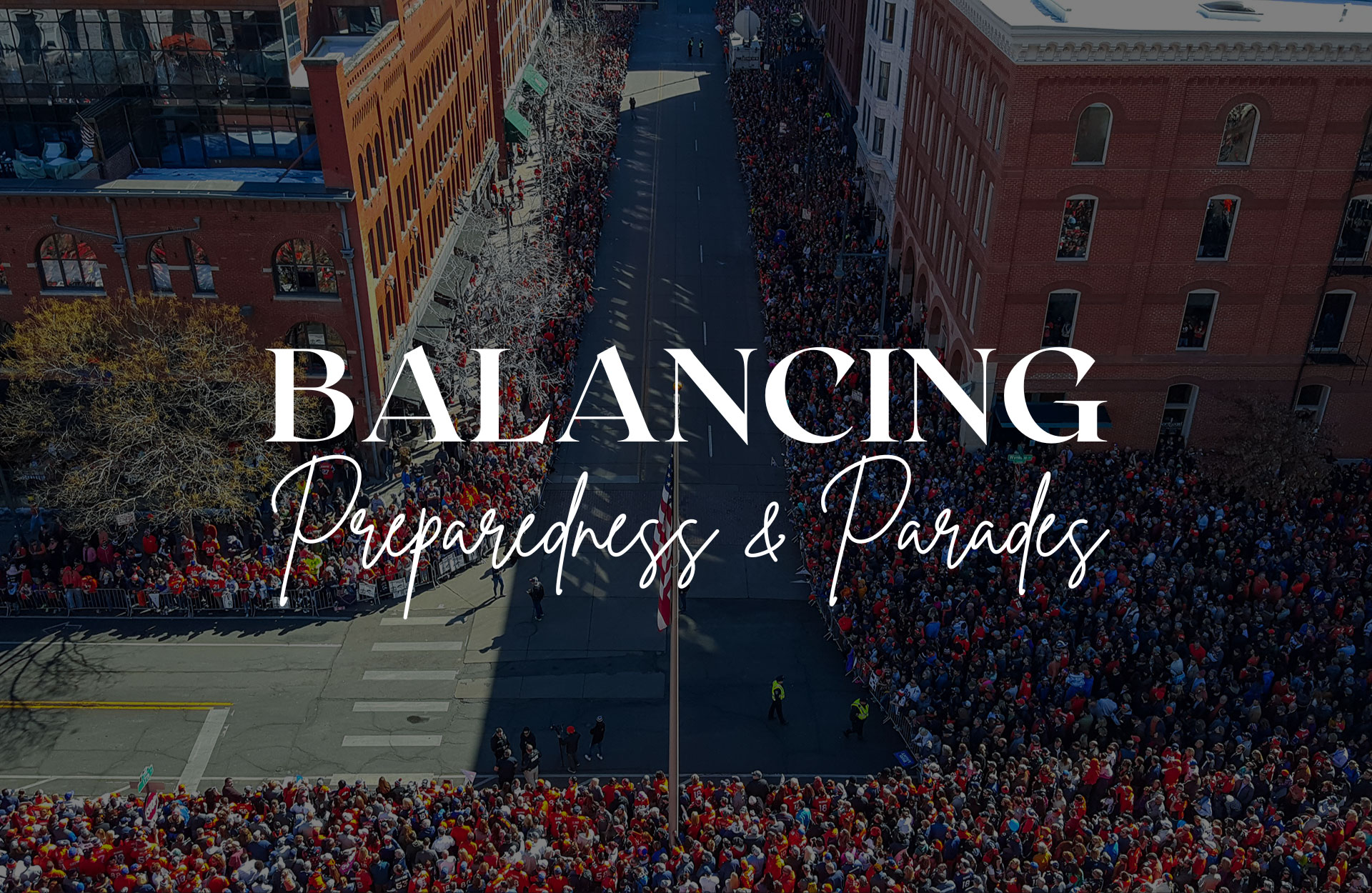Vehicle attacks are sudden, devastating, and often leave little time for reaction. Recent events, like the tragic Christmas market attack in Germany, emphasize the importance of preparation and awareness in public spaces. These attacks happen quickly, and without a plan, even a fraction of a second wasted can have serious consequences.
Events likely to attract vehicle attacks include religious holidays, parades, and occasions that bring crowds into open streets. Your goal at these events is to have fun, relax, and enjoy yourself safely—without excessive worry. However, it’s important to “respect the risk” and earn your safety. Freedom comes with constant responsibility and daily debt. Unfortunately, some will exploit that freedom to cause harm, often targeting moments when we are at our most carefree.
Hopefully the information in this article will help you increase your safety and protect your loved ones. It covers basic response strategies, mental preparation, and actionable techniques like the Tactical Twos and earning your Condition White. Preparation isn’t about living in fear—it’s about empowerment, confidence, and having the tools to face potential threats. Everyone deserves to enjoy holidays and public events without overwhelming worry, and these tips aim to strike that balance.
Why Vehicle Attacks Are So Dangerous
Vehicle attacks have become a common tactic for those seeking to inflict mass harm. Crowded spaces, open streets, and public events are prime targets because they allow attackers to weaponize a car or truck, striking multiple people in seconds.
Most people are unaware that vehicles often cause greater devastation than firearms in mass casualty events. For example, in 2016, an attacker in Nice, France, killed 86 people and injured 434 in a matter of minutes. This tragedy was mitigated only by the bravery of bystanders who delayed the attacker and ultimately from the bullets of police. Similarly, on November 21, 2021, a crazed attacker in Waukesha, Wisconsin, deliberately drove through a Christmas parade, killing six and injuring 62. These attacks happen everywhere and are actually encouraged by terrorist groups.
Many people don’t consider vehicles as potential weapons until it’s too late, leaving them vulnerable in open spaces. Recognizing this threat and mentally rehearsing your response can save lives.
Immediate Response to Vehicle Attacks
If a vehicle attack begins near you, follow these steps to maximize your chances of survival:
- Get Off the X: The “X” is the point of impact. You cannot outrun a car. Instead, move laterally (to the side) and seek hard cover or move deep inside a structure quickly.
- Seek Hard Barriers: Cement walls, large planters, poles, or the corners of buildings can shield you from a vehicle’s path. Avoid soft barriers like bushes or wooden fences.
- Avoid Channelized Spaces: Areas like alleyways or between parked cars can trap you, making escape more difficult.
- Stay Alert for Secondary Attacks: Many attackers escalate with follow-up actions, such as exiting the vehicle armed with weapons. One trainee who learned the methodology I teach earned a presidential award for stopping a terrorist on a campus who initiated an attack by wrecking a car before transitioning to a knife assault that injured 13 people. The attacker in France was also armed with a handgun. Always ensure the scene is safe before rushing to help someone in a vehicle crash—expect additional attacks, also known as the “plus one rule.”
The Tactical Twos: Your Emergency Action Plan
This framework offers a simple, actionable checklist to stay prepared in any environment. It encompasses the basics of alerting, running, hiding, fighting, and providing aid in various crises. Here are a few key elements:
- Two Safe Havens: Identify two nearby locations that offer protection, such as sturdy barriers or secure building entrances. Plan rally points ahead of time and brief your group on what to do if separated.
- Two Escape Routes: Always know two ways to exit any area. Crowds, debris, or attackers may block one path, making a backup essential.
- Two Areas of Potential Threat: Note two key places where an attack could likely begin, such as entry points or choke points. Regularly scan these areas and reassess for changes.
- Two Trauma Kits: Keep one trauma kit in your car and another with you, ideally in a bag, purse, or even on an ankle rig. In mass casualty events, first responders may be delayed, and having the tools to stop severe bleeding can save lives.
Mental Rehearsal: Avoiding Condition Black
Condition Black is a state of mental overload where fear and panic render you unable to act effectively. The easiest way to end up in Condition Black is to miss all the in-between levels of alertness. To avoid this, use mental rehearsal and visualization techniques to get into action quickly.
Before attending an event, take a moment to visualize potential threats and how you would respond: Imagine spotting an oncoming vehicle early and moving your family to safety. What are the first sights and sounds that might alert you? Rehearse issuing a “red alert” signal, such as shouting, “Get to cover!” or “Follow me!” Picture using sturdy barriers for protection and identify multiple escape routes.
Mental rehearsal creates a mental “program” for your brain to follow in a crisis, reducing response time and confusion. Without it, your mind may struggle to orient itself and act under pressure.
Earning Your Condition White
Condition White is the relaxed state we enjoy at public events—a time to let your guard down and have fun. However, entering this state without preparation leaves you vulnerable. To enjoy Condition White safely, you must earn it.
- Plan Ahead: Know the layout of the event. Identify safe havens, escape routes, and barriers. Share your plan with your family.
- Trust Your Instincts: Act on anything that feels off. Don’t dismiss unusual sights or sounds, such as revving engines, panicked screams, or a driver staring into a crowd.
- Quick Scan: Upon arrival, conduct a 10-second scan to establish a baseline for what’s normal and note any anomalies.
- Condition Orange Check: Before fully relaxing, elevate your awareness briefly to actively look for anything suspicious. This will also help you mentally check off a few more items from the Tactical Twos.
- Recalibrate: If you’ve been in Condition White for too long, shift back to Condition Yellow periodically to refresh your situational awareness. Enjoy yourself, but take notice when you’ve lost situational awareness for too long.
By earning your Condition White, you can enjoy the event while staying prepared for the unexpected.
Fun With the Security of Preparation
Emergency preparation doesn’t have to feel grim or fear-based. It can be a meaningful way to connect with your family. Practice your plans together, review the Tactical Twos, and make identifying safe havens and escape routes a fun challenge. While it takes effort early on, these practices become second nature and can apply to many situations.
This proactive approach enhances safety while building confidence in your ability to protect your loved ones. In an unpredictable world, preparation lays the foundation for peace of mind—and when peace isn’t possible, every ounce of preparation magnifies the power of your response.
Be capable and confident in a crisis. Be a True Guardian and First Responder.
Take the first step with your Family Emergency Action Plan.


